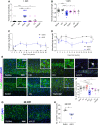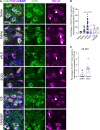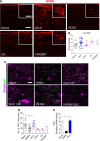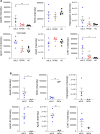Apolipoprotein B-100-mediated motor neuron degeneration in sporadic amyotrophic lateral sclerosis
- PMID: 36043141
- PMCID: PMC9416068
- DOI: 10.1093/braincomms/fcac207
Apolipoprotein B-100-mediated motor neuron degeneration in sporadic amyotrophic lateral sclerosis
Abstract
Amyotrophic lateral sclerosis is a fatal neurodegenerative disease characterized by motor neuron degeneration. Approximately 90% of cases occur sporadically with no known cause while 10% are familial cases arising from known inherited genetic mutations. In vivo studies have predominantly utilized transgenic models harbouring amyotrophic lateral sclerosis-associated gene mutations, which have not hitherto elucidated mechanisms underlying motor neuron death or identified therapeutic targets specific to sporadic amyotrophic lateral sclerosis. Here we provide evidence demonstrating pathogenic differences in CSF from patients with sporadic amyotrophic lateral sclerosis and familial amyotrophic lateral sclerosis patients with mutations in SOD1, C9orf72 and TARDBP. Using a novel CSF-mediated animal model, we show that intrathecal delivery of sporadic amyotrophic lateral sclerosis patient-derived CSF into the cervical subarachnoid space in adult wild-type mice induces permanent motor disability which is associated with hallmark pathological features of amyotrophic lateral sclerosis including motor neuron loss, cytoplasmic TDP-43 translocation, reactive astrogliosis and microglial activation. Motor impairments are not induced by SOD1, C9orf72 or TARDBP CSF, although a moderate degree of histopathological change occurs in C9orf72 and TARDBP CSF-injected mice. By conducting a series of CSF filtration studies and global proteomic analysis of CSF, we identified apolipoprotein B-100 in sporadic amyotrophic lateral sclerosis CSF as the putative agent responsible for inducing motor disability, motor neuron degeneration and pathological translocation of TDP-43. Apolipoprotein B-100 alone is sufficient to recapitulate clinical and pathological outcomes in vivo and induce death of human induced pluripotent stem cell-derived motor neurons in vitro. Targeted removal of apolipoprotein B-100 from sporadic amyotrophic lateral sclerosis CSF via filtration or immunodepletion successfully attenuated the neurotoxic capacity of sporadic amyotrophic lateral sclerosis CSF to induce motor disability, motor neuron death, and TDP-43 translocation. This study presents apolipoprotein B-100 as a novel therapeutic target specific for the predominant sporadic form of amyotrophic lateral sclerosis and establishes proof-of-concept to support CSF pheresis as a therapeutic strategy for mitigating neurotoxicity in sporadic amyotrophic lateral sclerosis.
Keywords: CSF; apolipoprotein B-100; neurodegeneration; neurotoxicity; sporadic amyotrophic lateral sclerosis.
© The Author(s) 2022. Published by Oxford University Press on behalf of the Guarantors of Brain.
Figures










References
-
- Kiernan MC, Vucic S, Cheah BC, et al. . Amyotrophic lateral sclerosis. Lancet. 2011;377:942–955. - PubMed
-
- Brown RH, Al-Chalabi A. Amyotrophic lateral sclerosis. N Engl J Med. 2017;377:162–172. - PubMed
-
- Rosen DR, Siddique T, Patterson D, et al. . Mutations in cu/zn superoxide dismutase gene are associated with familial amyotrophic lateral sclerosis. Nature. 1993;362:59–62. - PubMed
-
- Benatar M. Lost in translation: Treatment trials in the SOD1 mouse and in human ALS. Neurobiol Dis. 2007;26:1–13. - PubMed
LinkOut - more resources
Full Text Sources
Other Literature Sources
Miscellaneous
